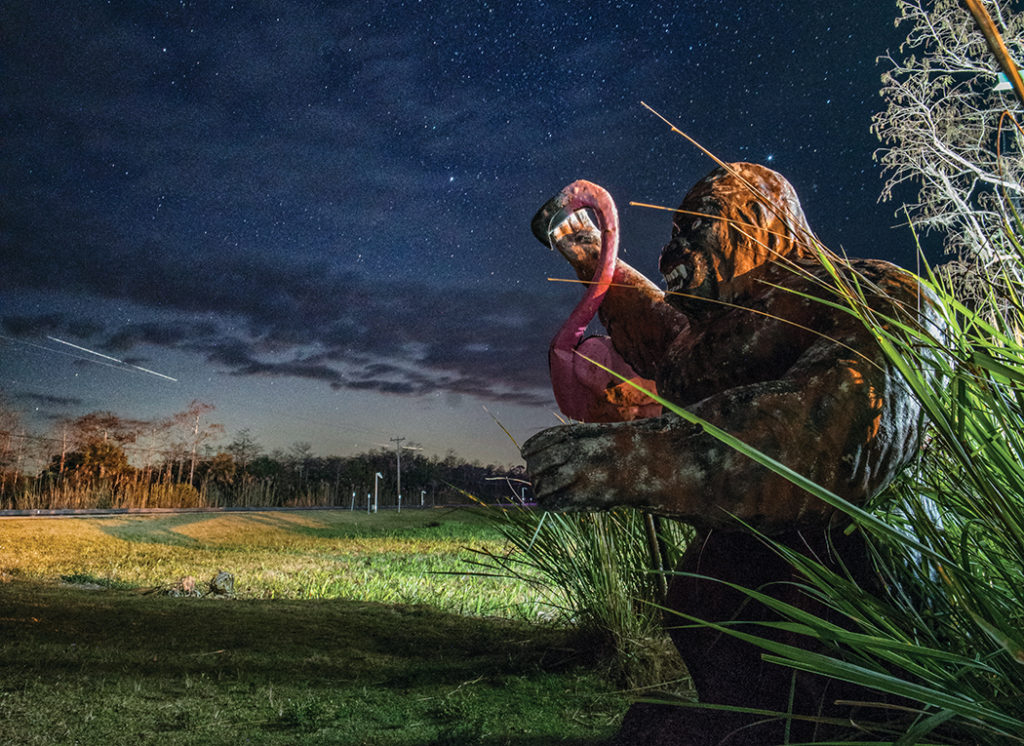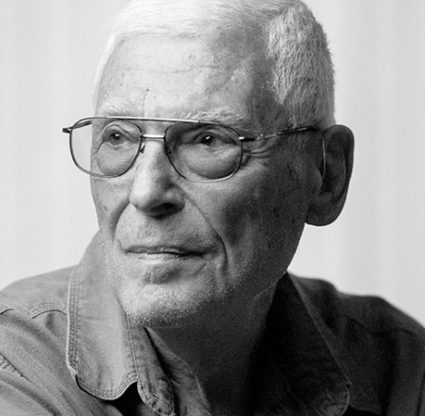The lima beans presented a problem after learning of the poison. Earlier I had Googled “when and why do people eat lima beans?” to find out that raw ones, when crunched, release cyanide. And yet we needed them—as bait. Lima beans, so the story goes, are the preferred snack of the skunk ape, the Bigfoot of Florida that’s been wandering this peninsula for decades. In less than a week, my husband and our daughters, 8 and 4, planned to scout for the skunk ape in the Everglades.
Hence the reason our 8-year-old, Violette, and I loiter one evening near the bean bins in Whole Foods. We head to the canned vegetable aisle.
“We should ask someone,” Violette suggests.
I am bashful about drawing attention to our legume needs. Violette is unfazed. She approaches a young salesclerk, who looks to me. “They’re for an experiment,” I say, lest this clerk judge me as some sort of fairy-tale villain who dishes out lima beans and belly button fuzz to my child. The clerk scans the rows of cannellinis, navy, pinto, black, kidneys and garbanzos and then asks around before returning with bad news.
“We can just use edamame,” Violette shrugs.
To be clear, clearly a spoilsport, I don’t believe in Bigfoot or that it has a stinky Sunshine State cousin. But I’d like to. I lap up unexplained mysteries and binge on them when they come in the format of podcasts. I love Old Florida curiosities and campfire tales with hazy parameters of truth. A family skunk ape hunt would make for a solid story for our girls’ Florida childhood portfolios. I imagined the gobsmacked looks of my daughters’ future college roommates when they tell them. Beat that, northeastern kids.
Much has been written and filmed about the skunk ape. Humor writer Dave Barry dedicated a chapter to it in his 2016 book, Best. State. Ever: A Florida Man Defends His Homeland. In 2014, Smithsonian produced an in-depth piece. Articles and books often conclude there’s a lack of physical evidence. Frankly, I don’t care. The skunk ape is an icon of Florida quirk. Dave Shealy is its notable champion. Lucky for us, he’s local.
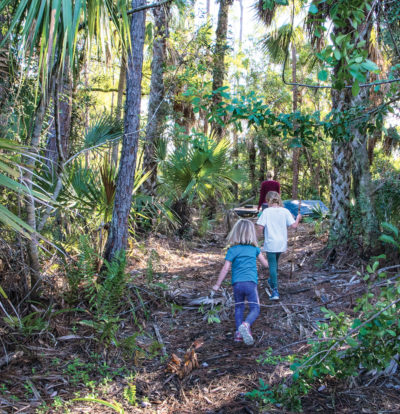
For decades, Shealy ran the Skunk Ape Headquarters at his Trail Lakes Campground in Ochopee, the speck on the map where he was raised in the Big Cypress swamp. He’s reported seeing it around his property three times. As such, Trail Lakes will be my family’s base for our mission. I’d met Shealy once, more than a decade ago as a newspaper reporter, and was charmed. He’s intense and locks into eye contact during interviews, which may be why so many writers mention the cool blue color of his eyes. Usually, he’s photographed in Gladesman fashion, sporting a black brimmed hat with teeth or claws around the band, and tall boots.
I hadn’t heard much about Shealy in the past few years. For a while there, earlier in the 2000s, he was everywhere. Naples Daily News. The Stan & Haney Show. The Miami Herald. The Daily Show. The Discovery Channel. Animal Planet. A few years back, a fellow reporter told me Shealy had retired to the Fort Myers area. His son Jack Shealy bought Trail Lakes in 2015. The skunk ape remains a totem in this incarnation of business that includes the campground, gift shop and reptile exhibition, and Everglades Adventure Tours. Jack, 35, has built up eco-tourism offerings steeped in the family’s Gladesmen heritage and added glamping options. “It’s been an evolution from roadside attraction to Old Florida,” Jack says. “I really wanted to continue our legacy.” They have to change to survive. “It’s like last man standing at this point.”
Though the idea of Dave Shealy in suburbia, out of skunk ape habitat, felt amiss. I wondered if he was tired of playing, tired of being asked to rehash the same stories. On repeat, even the best stories get old until that moment at a backyard party when you say, “Did we ever tell you about the night we met?” And your friend then says, “How you were set up on a bike ride, Marc lost his voice at your housewarming party, he started coughing, told you he was French, and then you told him you didn’t much like France?”
Well, more or less.
The week of our expedition, I call Dave Shealy for scouting advice. We had planned to camp at Trail Lakes, but tent spots were booked for its Everglades Roots Festival, an annual Glades culture and music weekend.
To my relief, Shealy calls back.
“I had heard you moved,” I say.
“I do live out there,” he says. He’s 55 now and has a small cabin on the campground property but also stays in Cape Coral with his girlfriend. It’s hard to find romance in a swamp. People still call him with sightings. Lately he’s hearing of activity in the Golden Gate area. He hadn’t been out to check. But these days, he’s warier of attention, especially from TV people. “They just want to do everything on the cheap. It’s not a sideshow. It’s the real thing. I get tired of having to talk to people like that. It sounds trivial but do it for 20 years and it’s not trivial.”
He hasn’t completely bowed out of his public skunk ape persona. Recently, he had spoken to some Boy Scouts about the skunk ape. If college students ask to interview him for class projects, he helps, but “if it’s somebody wanting to waste my time, and pick my brain, they can kiss my ass.”
My cheeks flush, though he can’t see them by phone, as this sounds like what I have been doing. Then, to my surprise, Shealy offers to let us camp in his yard. “Call me Thursday.”
I text my friend Liz. Like many journalists who have lived in Southwest Florida for a good long stretch, she has interviewed Dave Shealy. He gave her a 2005 skunk ape documentary. When she made a cross-country move, she took the DVD with her—and when she moved back. I ask if Shealy charmed her. “I would say that I found him compelling; that he has that quality that in its best form is charm and in its worst is cult leader,” she texts back.
We make a date to watch the documentary.
The girls huddle before the TV in our living room. Adeline, the 4-year-old, loses interest upon realizing there are no cartoons. “Not that kind of movie,” she howls.
The documentary includes footage shot by Shealy nearly two decades ago that skeptics have mused might be his brother in a suit.
“It looks like a running person,” Violette scoffs.
Later, she reconsiders. “Maybe it’s a gorilla?”
Often, in the DVD, Shealy is reclining as he speaks. Sometimes, he is without a shirt. Shealy sets clumps of lima beans in the swamp. That is the final straw for Violette. “Lima beans don’t even grow in the Everglades!”
It’s unclear how factually hewn the documentary is, as Ochopee is misspelled as “Ochoppee” throughout and the documentary ends “Audios!” Liz and I assume they mean, “A-d-i-o-s!” and not a multitude of sonic experiences.
A few mornings before the trip, Violette approaches as I’m brushing my teeth. “You know those things you can hook people up to and tell if people are telling lies?”
I spit. “Lie detectors? Polygraph tests?”
“You should do one for the people who saw the skunk ape.”
“Well you can’t really do one unless people are willing or unless maybe they’ve been arrested for a crime.”
This would have been the perfect opening for a primer on constitutional rights, but I hadn’t had coffee. Instead, we discuss buying souvenir shirts. “I’m going to tell kids I saw the skunk ape,” she says. “I’ll say, yeah, look at my shirt.” I laugh but then feel sad, as it makes me wonder how much longer she’ll believe in Santa.
The day before we’re set to head to Ochopee, Shealy calls with particulars. “You’ll be fine out there but make sure you keep the kids close. I’m a grandfather and we’ve got rattlesnakes, cougars and bears.”
His son Jack is raising two little boys in the campground.
“They leave you alone, though, right?” I ask.
“Well, they come close. I’m on a panther trail. Bring whatever you’ve got.
Flashlights.
Tiki torches.
Guns.”
Reflexively, I write “need guns” below “Doritos” on the shopping list.
Friday evening, on our way to Big Cypress, my husband, Marc, remembers the tent that he forgot to pack back at our house.
“Do we have the lima beans?” Violette asks.
We did have those, locating them at Publix. By the way, the cyanide cooks out and the United States protects lima bean eaters with cyanide-related restrictions, the internet says. At a nearby Walmart, Marc selects a tent that could fit the Mormon Tabernacle choir. During the 40-minute drive, I read aloud from the book Myths and Mysteries of Florida by E. Lynne Wright, one in a generous selection of books referencing the skunk ape in the library.
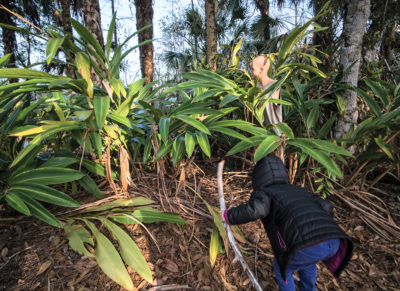 The legend may stretch to the Seminole and Miccosukee people, who had a word for “big hairy men,” the book says. Stories passed to settlers and floated up to state government when, in the late 1970s, a lawmaker from Fort Myers introduced a skunk ape protection bill. It did not pass. “People with flawless reputations, including professionals, officers of the law and even scientists, have described seeing the creatures,” I read.
The legend may stretch to the Seminole and Miccosukee people, who had a word for “big hairy men,” the book says. Stories passed to settlers and floated up to state government when, in the late 1970s, a lawmaker from Fort Myers introduced a skunk ape protection bill. It did not pass. “People with flawless reputations, including professionals, officers of the law and even scientists, have described seeing the creatures,” I read.
In 1959, there were reports from “a group of upright, all-American Boy Scouts” in Ocala National Forest. Archeologists found 17-inch tracks in Big Cypress swamp in 1971. A “clearheaded and practical pastor” in Charlotte County reported seeing something, too. (Apparently, only Boy Scouts and people with respectable job titles make reports worthy of reprinting.) I pause for suspense.
“So, it’s not just Dave Shealy who has seen it.”
Shealy’s in the book, too, though the author ribs him about the lima beans. “How he learned the creature preferred lima beans has not been explained.”
At the Trail Lakes gate, dozens of cars and campers wait as a character in a skunk ape suit wags its arms, making kids scamper and squeal. Dave Shealy appears in a black hoodie that reads, “Monkey Business.” He hops on his ATV and leads my family through the park, past a gate with a “No Trespassing sign” and a gargoyle, and down a dark gravel road to the pine hammock where we will camp. Within seconds, Shealy conjures a campfire. Marc sets to assembling our new canvas townhome.
“I’m embarrassed to admit…” I say.
Shealy finishes, “That’s a new tent. Isn’t it?”
The girls and I settle before the fire. Shealy agrees to a few hunt-related questions with the disclaimer, “I haven’t been out a whole lot the last few years.”
“So have you given up?” I ask.
“Oh no.
“My brother and I saw it when we were young, I was 10 years old, right back here,” he points to the swamp in the blackness beside us. If something had rustled at that moment, the girls and I probably would have jumped. “That’s where I took my video. Right now, the Travel Channel is trying to get that video and I haven’t even talked to them.”
Suddenly, a silent Violette tumbles from her folding chair. Adeline is on my lap and uncharacteristically quiet. Shealy faces a now upright Violette. He softens his tone and bends a bit to address her.
“Skunk ape walks on two legs. It’s not black; it can be like cinnamon, like a brownish black dark. Usually they’ve got four toes and they like to climb trees. … They’ll build like a nest in a tree, like a bird, but it’s huge, it’s like an eagle’s nest. And when the water’s in the Everglades, that’s where they sleep at.”
“Ahh…” she says, softly and nods.
Once he departs, Violette whispers, “From him, I believe it more.”
Tall pine trees circle us like a coven and stretch to stars clear and bright. In the distance, every so often, the bluesy singer closing the Friday night shindig, complete with a bonfire stoked by a shirtless man named Rebel and frog legs and fry bread for sale, gives frequent shout-outs to the skunk ape. I hear, “God, bless the Everglades.”
Amen, I think. We should get out here more.

Early Saturday we stumble from the tent. Shealy materializes within minutes with his fire-starting magic. “I don’t want to steal your thunder, Dad,” he turns to Marc and then does. My husband will later lament Shealy stole his thunder twice.
Shealy ducks back into his cabin, “I’ll leave you lovebirds alone.”
After breakfast, the 4-year-old who had shown little interest in the skunk ape points to a patch of slightly bent grass, “I see a track!” The girls stomp around the hammock, searching for clues. They peer into a large rusted animal trap. “I found fur!” Violette beckons. “I love this place, it’s so fun to explore!”
They wander and discover a gravestone, a dead-eyed child mannequin dressed in a skunk ape shirt, a Skunk Ape Research Center Jeep with a fake skeleton on the hood, an aquarium, a sardine can. The girls fetch some lima beans and sprinkle them in a clearing. Overnight, Violette had become a convert and another Shealy fan. “He’s really cool and now I actually believe in the skunk ape.”
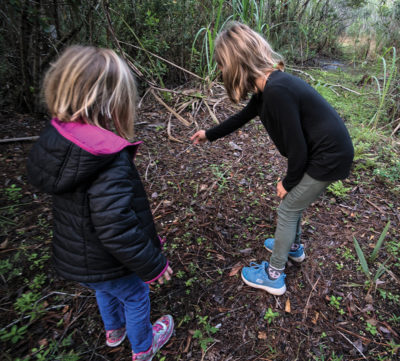 Later Shealy leads us into the swamp around his place. The ground squishes beneath our feet. Out there where it feels free, he’s reminded of how he hasn’t felt free, how the government has restricted his land and life. For decades, he says, park officials made it near impossible for his family to make a living, though his father started the campground before the Big Cypress National Preserve was established in 1974. “It was like a little war to get us to sell out and so I basically lived in poverty for like 20 years, just using everything I had just to pay the bills.”
Later Shealy leads us into the swamp around his place. The ground squishes beneath our feet. Out there where it feels free, he’s reminded of how he hasn’t felt free, how the government has restricted his land and life. For decades, he says, park officials made it near impossible for his family to make a living, though his father started the campground before the Big Cypress National Preserve was established in 1974. “It was like a little war to get us to sell out and so I basically lived in poverty for like 20 years, just using everything I had just to pay the bills.”
Somewhere past a pile of deer bones, Shealy stops. He turns to face me. “It’s hard for me to talk to somebody like you, a reporter. One way or the other, it’s not what they came for. They want to know how many alligators there are or where the best airboat ride is and to be honest with you I’m just tired of it.
“There’s a lot more to the Everglades than that. It’s a lot deeper.”
His tone is not mean, but direct.
“Are you tired of being known as the skunk ape guy?” I ask later.
No, he says, the skunk ape puts food on his table and there’s a “certain amount of prestige that goes with it, but if people only knew me better, and understood the impact of how my struggles have changed the Big Cypress Preserve.”
Initially, the preserve was highly unregulated, he says, and hundreds of campers would pump wastewater into the swamp. In his tenure at the campground, he fought to stop that and other projects that would have hurt the land, the culture.
“The naysayers that don’t believe in the skunk ape and (think) that I’m possibly doing it just to survive, maybe they could at least find it in their hearts to respect me for the changes I’ve made in the preserve, on their behalf, for them.”
All these years, us media rubes had come for the silly story while neglecting the more serious one he cared about. He thanks us for coming, and excuses himself to start a batch of swamp cabbage for the festival. “You can always call me.”
We leave for Turner River Road, Shealy’s recommendation as a skunk hot spot. I tally the finds and encounters so far this weekend that were not a skunk ape: hundreds of tiny grasshoppers, bamboo that made for fine walking sticks, Gladesmen, hippies, pumpkin fry bread, hospitality in a strange beautiful place, a massive python and the best parrot feather ever at the gift shop, eight alligators, a great blue heron, an anhinga and three Skunk Ape Headquarters mugs. Along the way we also saw a vulture perched in a bald pine tree that Violette and I decided was magic.
“Vulture, do you know where the skunk ape is?” Violette called out. “Tell us which direction with your head.”
The vulture turned its head to the left. “That way,” I pointed with an excuse to venture deeper into the swamp.

